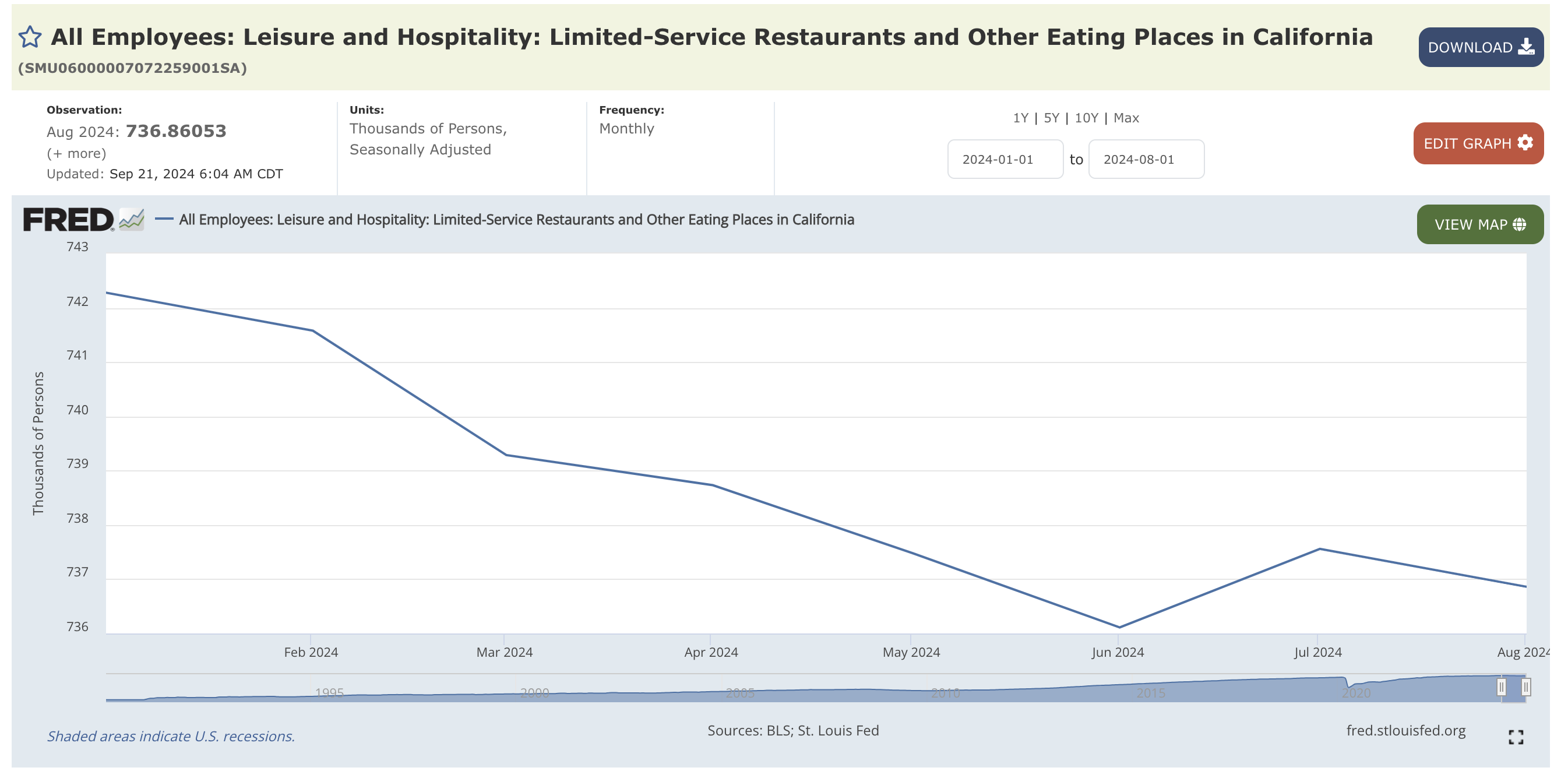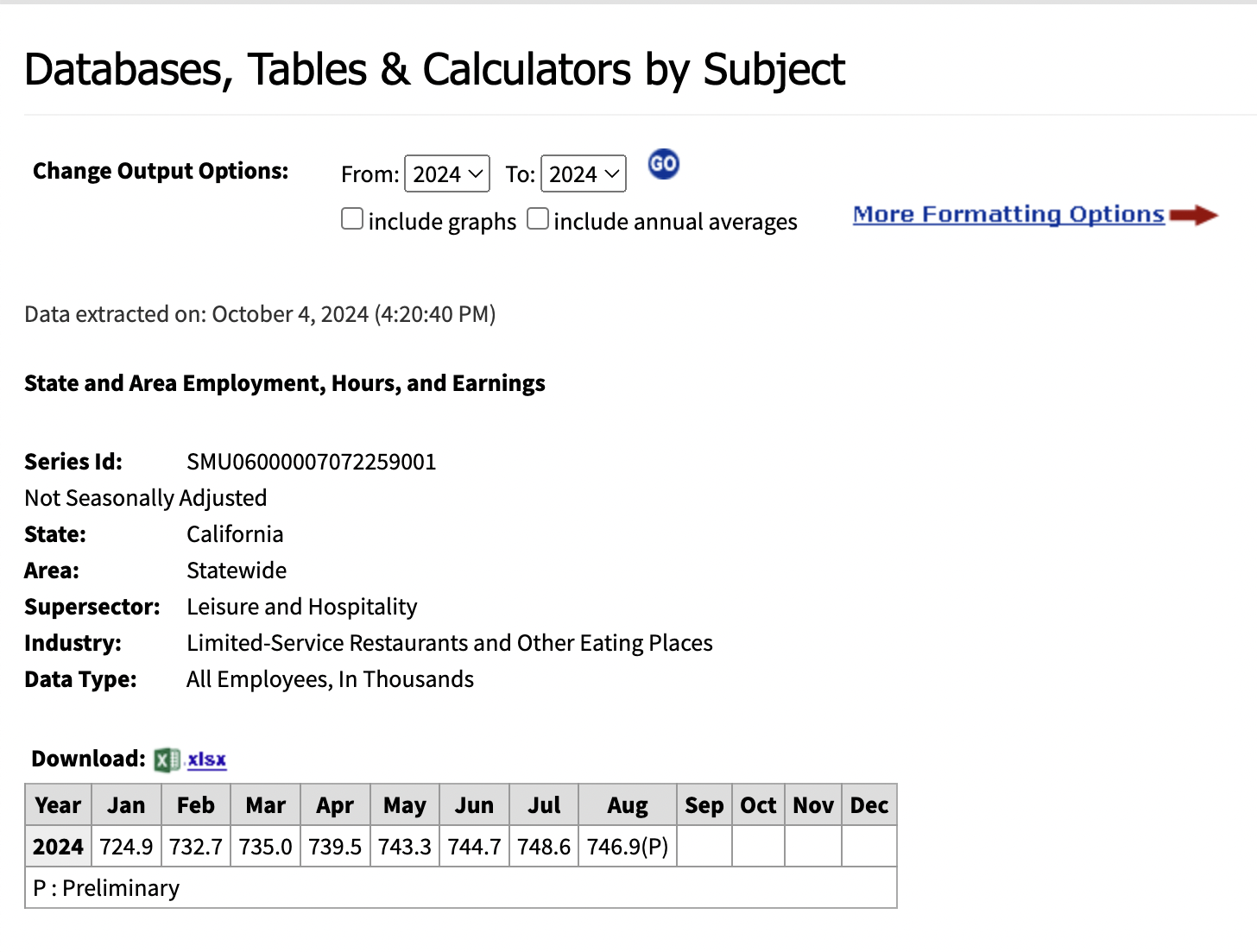
CALIFORNIA – The California Business and Industrial Alliance (CABIA) called out Governor Gavin Newsom on October 2, for over 5,000 job losses, they say, as a result from the state’s fast-food minimum wage hike.
“The Governor needs to wake up to the fact that his fast food minimum wage hike is a disaster,” said CABIA president and founder Tom Manzo.
Newsom signed into law a bill, effective April 1, that increased the minimum wage to $20 per hour for workers at fast-food chains with 60 or more locations.
CABIA used data from the St. Louis Federal Reserve Bank Economic Data (FRED) showing that California fast food jobs have declined from 742,277 in January of 2024 to 736,861 in August 2024.

Manzo goes on to say that overregulation and high-costs in California have made running a business nearly impossible.
“This wage hike is the final nail in the coffin for so many business owners who were already struggling to stay afloat. Newsom needs to face the reality of this misguided legislation and find a solution that rolls back his job-killing policy,” said Manzo.
Newsom says fast-food jobs have increased
In a September opinion piece, Newsom said fast-food jobs have increased every month this year based on data from the Bureau of Labor and Statistics.
“Since the law was enacted, California has added 11,000 new jobs in the industry. As of July, our state boasts a historic 750,500 fast-food jobs,” said Newsom.

Newsom goes on to say that families are finding it easier to make ends meet, reducing their reliance on public assistance programs and contributing to a healthier, more prosperous state due to the wage increase.
Data is not seasonally adjusted
The California Center for Jobs and the Economy says those attempting to argue that the wage increase has had no impact (or even a positive impact) on jobs have been highlighting data that are not seasonally adjusted.
They argue that seasonally adjusted data corrects for seasonal fluctuations in industries such as Limited Service Restaurants that vary substantially over the year
“It is also the form of data consistently used by the Governor (other than in this case), EDD, and the media in reporting both labor force and jobs data in their monthly releases, although the Center uses both the adjusted and unadjusted data in its analyses,” says a statement on the website.
RELATED: 500,000 California fast food workers to get $20 minimum wage in 2024

